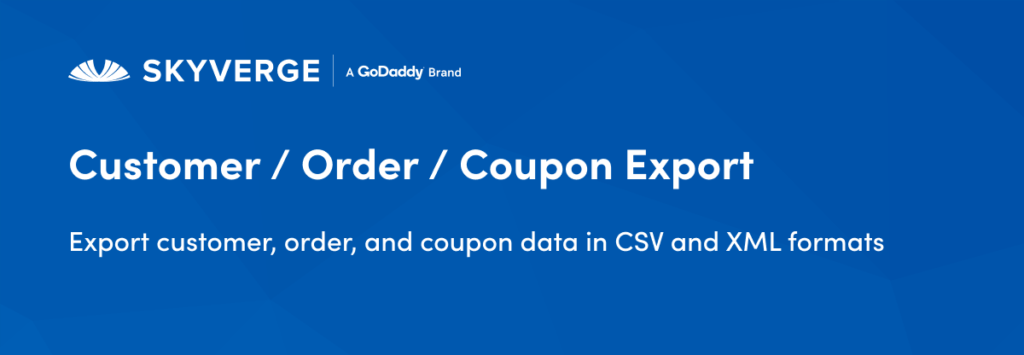
Harness the Power of WooCommerce EDI for Your Online Store
If you’re selling online with WooCommerce, it may be time to consider an Electronic Data Interchange (EDI) integration.
An EDI is a powerful tool that can streamline your operations and elevate your business by transforming the cumbersome exchange of paper documents into a sleek, digital conversation.
But what exactly is a WooCommerce EDI, and how can it improve your eCommerce experience? This article explains that in detail, and explores the world of WooCommerce EDI plugins, their benefits, how they work, and best practices for setup. Ready to dive in? Here’s what we’ll cover:
What is WooCommerce EDI?
At its core, WooCommerce EDI refers to the electronic exchange of business documents—like purchase orders, invoices, and shipping notices—between you, your suppliers, and customers directly through your WooCommerce store.
This automated process replaces the traditional, error-prone methods of phone calls, faxes, and emails. The integration of EDI technology into your WooCommerce store creates a seamless, efficient, and error-free communication channel, streamlining operations and enhancing your business’s overall performance.
Understanding WooCommerce EDI begins with recognizing the different components that make it work.
Essentially, a WooCommerce EDI setup involves a plugin or integration service that translates your store’s data into the standardized format required for EDI. This allows for real-time data exchange with your trading partners, regardless of the disparate systems you may be using.
The result? A synchronized, efficient workflow that reduces manual data entry, minimizes errors, and speeds up the entire order fulfillment process.

Benefits of EDI for WooCommerce
The adoption of an EDI for WooCommerce offers a myriad of advantages that can significantly enhance the operational efficiency and profitability of your eCommerce business.
First, an EDI will automate the exchange of business documents, which drastically reduces manual data entry and the associated human errors. This not only speeds up transaction times but also ensures the accuracy of critical business data, fostering stronger relationships with your trading partners.
Second, an EDI for WooCommerce paves the way for improved inventory management. With real-time updates, you can maintain optimal inventory levels, reducing both overstock and stockouts. This heightened inventory accuracy leads to better customer service, as customers receive their orders on time, every time.
Additionally, by streamlining operations, WooCommerce EDI integration can lead to significant cost savings. Reduced paperwork, fewer data entry errors, and quicker order processing times all contribute to a leaner, more efficient operation.
How does WooCommerce EDI work?
When it comes to how WooCommerce EDI operates, it’s pivotal to understand the flow of data between your WooCommerce platform and your trading partners.
At its heart, this process involves three key steps: document preparation, translation, and transmission.
Initially, a WooCommerce EDI plugin or integration service gathers data from your store—such as order details—and converts it into an EDI-compliant format. This formatted data is then securely transmitted to your trading partner, who receives and processes it into their systems.
The beauty of this automated workflow is its ability to facilitate rapid, accurate exchanges of information, making the entire supply chain more efficient.
Another integral aspect of how WooCommerce EDI functions is the variety of file formats it supports.
Common formats include ANSI X12, EDIFACT, and XML, among others. These standardized formats ensure that data exchanged between disparate systems remains consistent and interpretable by all parties involved.
By leveraging a WooCommerce EDI solution that supports these formats, businesses can enhance compatibility with a wide range of trading partners, further expanding their market reach and operational capabilities.

Best practices for WooCommerce EDI setup
Implementing a WooCommerce EDI system successfully requires careful planning and adherence to best practices.
One of the foremost steps is selecting the right WooCommerce EDI plugin or integration service.
Look for solutions that not only support the EDI file formats relevant to your industry but also offer robust security features to protect your data. It’s also wise to choose a plugin or service with excellent customer support, ensuring you have access to expert assistance whenever needed.
Once you’ve chosen your WooCommerce EDI plugin, the next steps involve configuring your system for optimal performance. This includes mapping out your data flows, setting up document templates, and establishing communication protocols with your trading partners.
Regular testing and monitoring of your EDI transactions are crucial to identify and resolve any issues promptly, ensuring a smooth, uninterrupted flow of business data.
Additionally, staying informed about updates and developments in EDI technology can help you leverage new features and improvements to keep your operations running efficiently.
EDI solutions tailored for WooCommerce
Understanding that every WooCommerce store has unique needs, it’s essential to explore the different EDI solutions that are compatible with WooCommerce. .
Several WooCommerce EDI integrations and plugins offer a range of customization options, allowing you to tailor the EDI process to your specific requirements. Whether you’re a small boutique or a large, multi-vendor marketplace, there’s likely an EDI solution designed to fit your business model.
Moreover, some EDI providers specialize in certain industries or types of transactions, offering solutions that come pre-configured with the necessary document standards and trading partner networks.
This specificity can significantly simplify the setup process for businesses in sectors such as retail, manufacturing, and healthcare. By partnering with such providers, WooCommerce stores can benefit from deep industry knowledge and insights, ensuring their EDI implementation is both effective and compliant with sector-specific regulations.

EDI tools for WooCommerce
EDI tools for WooCommerce range from comprehensive managed services to simpler plugins that support data export and integration.
Among the more robust solutions listed below, you’ll find extensive features for automating and managing EDI transactions, ensuring seamless and efficient business processes. Additionally, the WooCommerce EDI plugins listed offer basic functionalities that can still benefit smaller businesses or those looking to handle EDI tasks manually.
Whether you’re looking for a full-service integration or a straightforward plugin, WooCommerce store owners have a variety of tools available to enhance their EDI capabilities and streamline their operations.
Comprehensive WooCommerce EDI integrations
SPS Commerce EDI for WooCommerce

SPS Commerce offers a comprehensive EDI solution for WooCommerce, simplifying order management by integrating orders from various sales channels into one platform. This full-service approach handles the complexities of EDI, allowing businesses to focus on growth by automating data entry and improving shipping efficiency.
Crossfire EDI Integration for WooCommerce

Crossfire provides a fully managed EDI service that connects WooCommerce with external service providers. The solution includes automated processes for sales orders, shipping notifications, invoices, purchase orders, and inventory updates, ensuring a robust and efficient EDI integration without requiring in-house expertise..

TrueCommerce offers a scalable EDI solution that integrates seamlessly with WooCommerce, providing comprehensive tools for order processing, inventory management, and supplier collaboration. It supports multiple EDI standards and protocols, making it suitable for businesses of all sizes.

Cin7 Omni provides an all-in-one inventory and EDI solution for WooCommerce. It integrates with multiple sales channels, automating the synchronization of orders, inventory levels, and shipments, which helps streamline operations and improve overall efficiency.

ConnectPointz offers a user-friendly EDI integration for WooCommerce that supports automated data exchange with trading partners. It is designed to handle various EDI transactions, including purchase orders, invoices, and shipping notices, ensuring smooth and accurate data flow.

eZCom EDI provides a cloud-based solution that integrates with WooCommerce to automate the exchange of orders, invoices, and other business documents. It focuses on delivering a seamless EDI experience with robust support and easy-to-use interfaces.
WooCommerce EDI plugin solutions

WooCommerce Order Export allows WooCommerce store owners to export order data to CSV files, which can be used for manual EDI processes. It supports automated exports to an FTP server, email, or secure URL, facilitating easier data handling.
WooCommerce Customer/Order CSV Export

Designed for exporting customer and order data from WooCommerce, the WooCommerce Customer/Order CSV Export plugin helps store owners generate CSV files for EDI purposes. It supports scheduled exports, making it easier to integrate with external systems.
QuickBooks Sync for WooCommerce

While primarily for accounting, QuickBooks Sync for WooCommerce facilitates data transfer between WooCommerce and QuickBooks, which can be part of an EDI workflow if QuickBooks is connected to an EDI system.

WooCommerce XML Export Suite enables the export of WooCommerce order, customer, and coupon data to XML format, a common format for EDI transactions. The plugin also supports automated and manual exports, aiding in EDI data exchange.
The WooCommerce EDI integrations and plugins above can help you streamline your order management and data exchange processes, whether you need a comprehensive service for large-scale operations or a simpler solution for smaller-scale manual handling.
Each tool offers unique benefits tailored to different business needs, making it easier to find the right fit for enhancing your WooCommerce store’s EDI capabilities.
Harness WooCommerce EDI for your eCommerce business
Embracing EDI technology through your WooCommerce store presents an excellent opportunity to streamline your operations, enhance efficiency, and foster stronger relationships with trading partners.
Understanding what WooCommerce EDI is, its benefits, how it works, and the best practices for setup, equips you to make informed decisions about integrating EDI into your business.
By selecting the right WooCommerce EDI tools, customizing solutions to fit your needs, and staying abreast of EDI advancements, you can harness the full potential of EDI to drive your online store towards greater success.
Find out how you can push your WooCommerce store to new heights with WP Engine’s advanced eCommerce hosting. See features, plans and pricing here, or speak to a representative to learn more.
